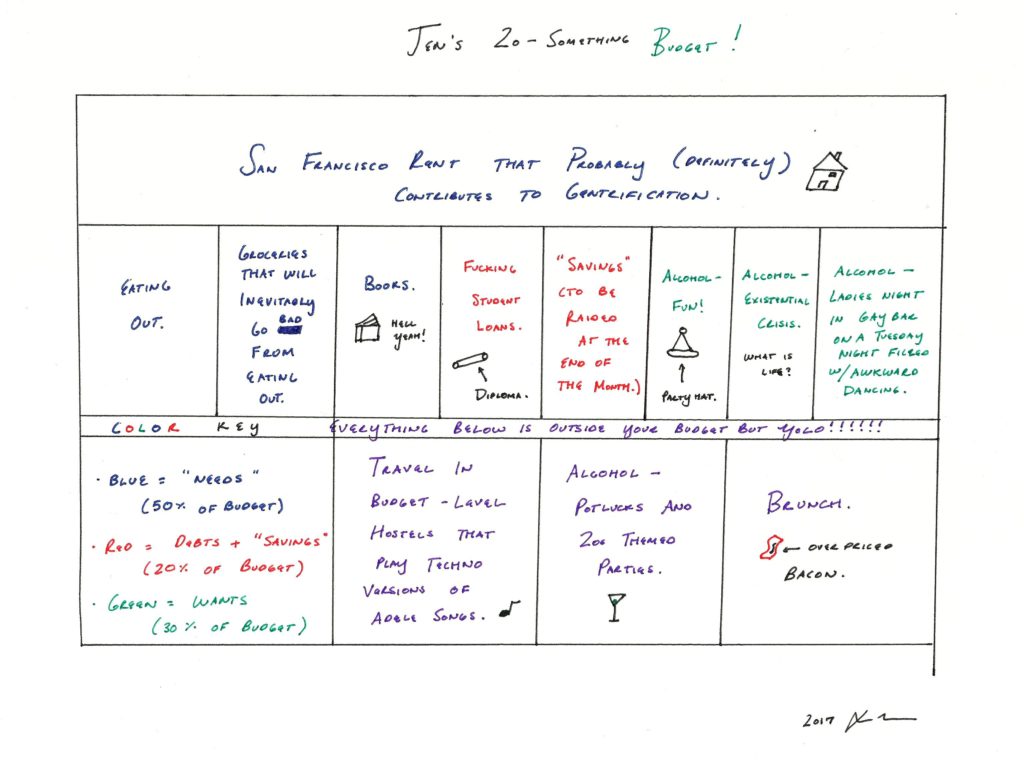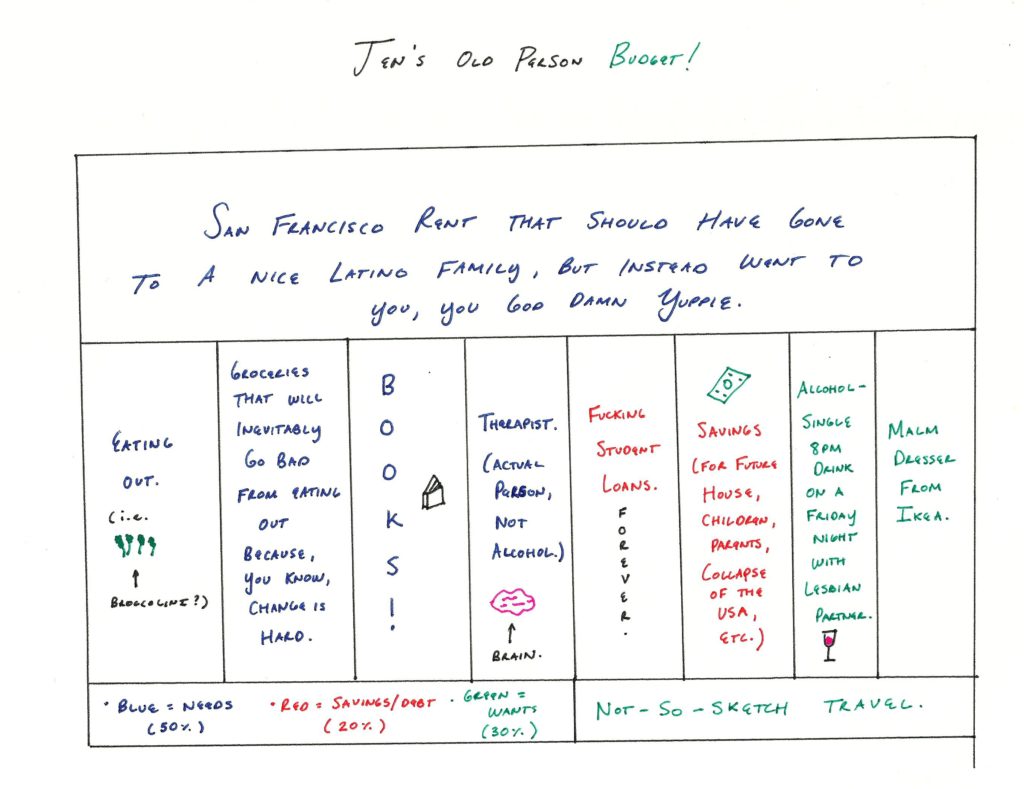In May of 2009, I moved to San Francisco after graduating from college. It was a place I had only been twice in my life – once for an unremarkable pre-move trip and once as a kid traveling with my grandmother (and apparently everyone else’s tiger balm-drenched Chinese grandmother) on a Chinese bus tour of California. On both occasions, I wasn’t hit with an Allen Ginsburg-esque love for this fog-filled, hilly metropolis. All I remember was how cold summer could feel and how sequined my grandmother’s clothing was despite our daily hours-long activity of sitting in a charter bus full of unimpressed Chinese ladies.
Give or take the months I’ve spent away for graduate school, I have somehow hit my 7-year mark living in San Francisco. If the insufferable television series “Sex and the City” should be believed, it takes 7 years for someone to become a “native New Yorker”. Should this logic be applied to San Francisco – New York’s equally expensive, equally pretentious, and equally homosexual west coast counterpart – I will have reached my “native” status as of this writing.
If time is not an adequate indicator of being a “native” San Franciscan, I have another convincing measure of nativity. According to psychologist Robert Plutchik’s seminal theory of emotion, there are eight standard human emotions, which include fear, joy, and surprise. I would argue that San Franciscans have two additional standard emotions – “Exasperation over expensive rent” and “Terror induced by clueless Lyft Driver who is from Sacramento”. I acquired the former emotion the moment I moved to this city and developed the latter emotion this past Saturday night.
Thus, to mark my self-proclaimed transition from invasive species to native species of a city I have grown to love, I’m going to partake in a San Francisco tradition – complaining about insignificant minutia.
—
Rant #1: Why is this line so damn long? [Ice Cream Edition]
This rant has many iterations which include, but are not limited to “Lines! Coffee edition,” “Lines! Brunch edition,” and “Lines! Artisanal chocolate (?) edition”.
I chose to write about waiting in line for ice cream because ice cream is among my top five favorite things in the world. Anything that stands in the way of my ravenously consuming ice cream feels like a travesty of injustice.*
I grew up eating entire tubs of Country Vanilla, Neapolitan, and Moo-llenium Crunch Blue Bell ice cream, which is a practice that has recently fallen out of favor because of the possibility of death by Listeria. Now, instead of risking death via infectious bacteria, I now risk dying in the frigid cold as I stand in line at one of the many San Francisco handcrafted ice cream shops – Bi-Rite Creamery, Humphry Slocombe, Mitchell’s, Smitten and, most recently, Salt & Straw.
I’ve had to stand in line so often at these shops that it feels like waiting for ice cream is inevitable. However, I find that the bottleneck is preventable if people stop the practice of trying every single flavor available. I dislike the practice for two reasons – first, the longer I have to wait in line, the more likely I am to come to the realization that purchasing a 5-dollar scoop of ice cream when it is already cold outside is a fucking stupid idea. Second, the people scooping your 17 samples of ice cream are probably twenty-something English majors with rock star dreams who are a few scoops away from early onset carpal tunnel syndrome.
In an effort to save the wrist nerves and tendons scooping ice cream in this great city, I wanted to share my approach to ordering ice cream:
- Determine the number of scoops you would like. Anything more than 3 scoops is obscene, you greedy bastard.
- To determine the number of samples to try, double the number of scoops you intend to order. For example, if you want 1 scoop, try 2 flavors. 2 distinct scoops equates to 4 tries. Under no circumstance should you try all 32 flavors of ice cream available unless you intend to order 16 distinct scoops. If you are thinking of ordering 16 distinct scoops, please refer to my off-color remark muttered in step number 1, you greedy bastard.
- To maximize satisfaction in the flavor combinations you choose, make sure that roughly half of what you choose to sample is new, interesting flavors. The other half should be traditional and reliable. For instance, “I want 2 scoops of ice cream, so I’m going to try 4 flavors. My 4 choices are vanilla, chocolate, balsamic and raspberry-infused fermented trout intestines, and candied walnut with malted soy milk of Pikachu.”
As you can tell, the above 3 steps are a general outline of the philosophy in which I live my life. Feel free to use – it works!
—
Rant #2: For the last time, “Hella” is not a unit of measurement.
This section is directed to my partner – a true native San Franciscan – who has insisted since the inception of our relationship that “hella” is unit of time, quantity, size, and dimension. Examples include “hella expensive,” “hella dumb,” and, most infuriatingly, “hella whack”. Who has perpetuated this non-sense and tainted our beloved partners with these lies?
People, it is unacceptable to tell me that “hella people are coming to the party”. Does that mean 4 people (“hella people” to me) or does that mean 37 people (“hella people” to my partner)? What does it mean that it is going to take “hella long to get here”? Is this 6 minutes (which feels “hella long” because I am hungry) or does this mean 2 hours (because your Lyft Driver from Fresno has collided on the Bay Bridge with a Lyft Driver from Modesto)? If the situation is “hella whack,” do you mean as whack as waiting in a long line to get ice cream in the cold or as whack as the 2016 presidential election?
Clarity in language is important. How important? Hella. Don’t know how important that is? PRECISELY.
—
*Editor’s Note: Probably not a travesty of injustice.

